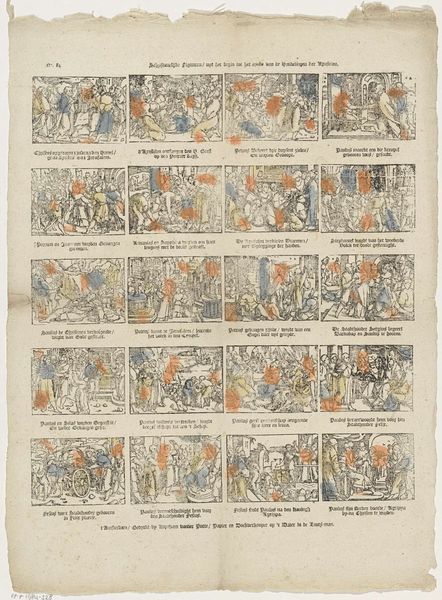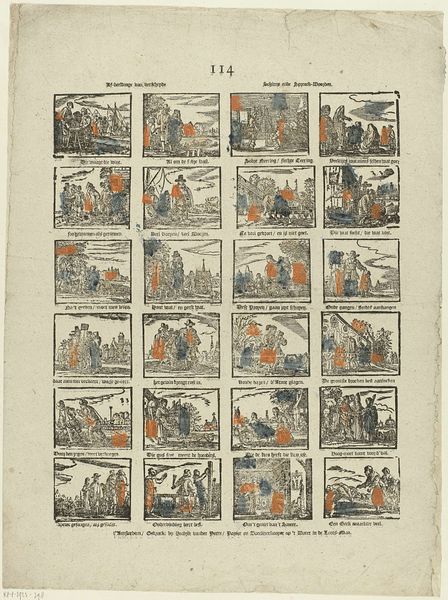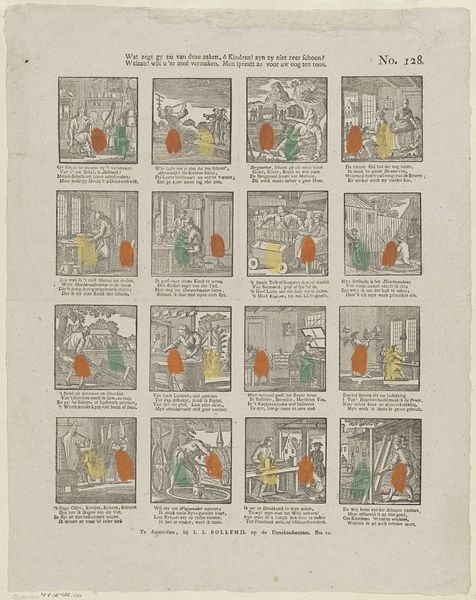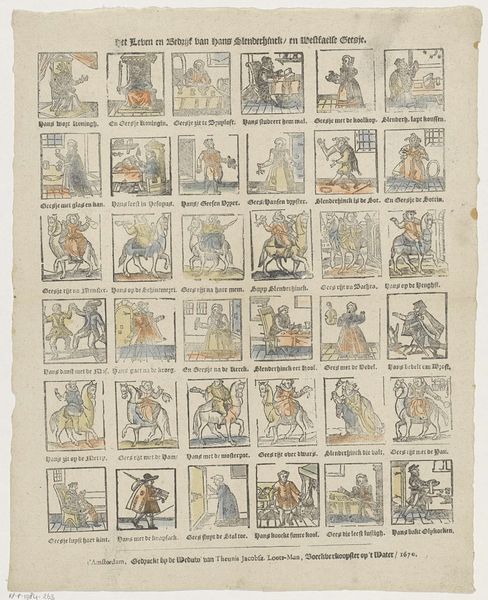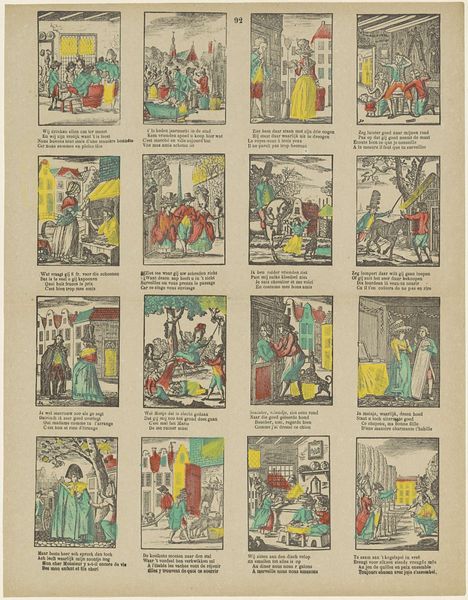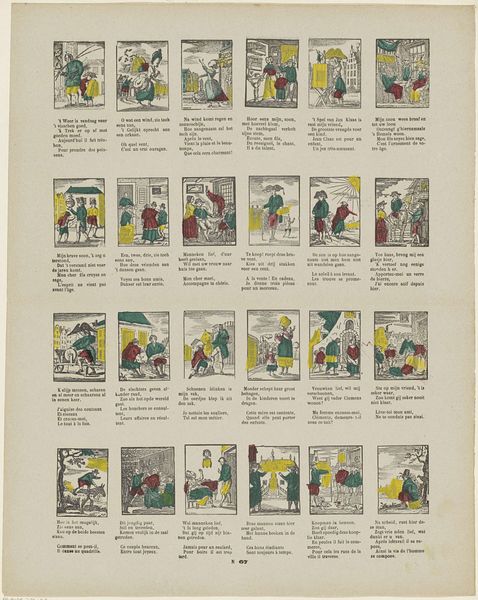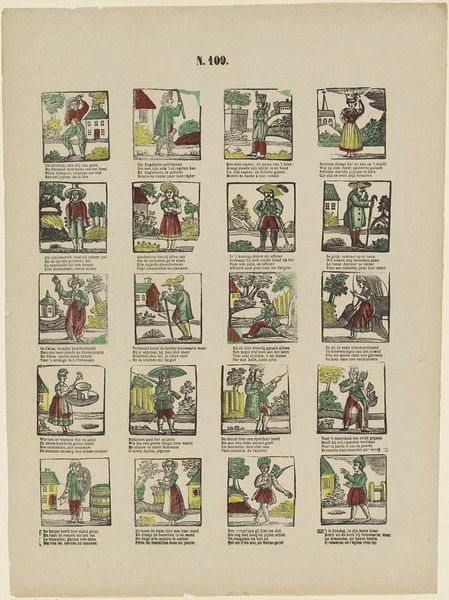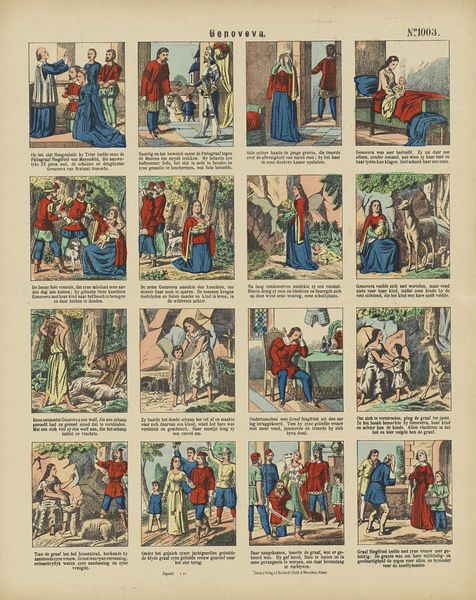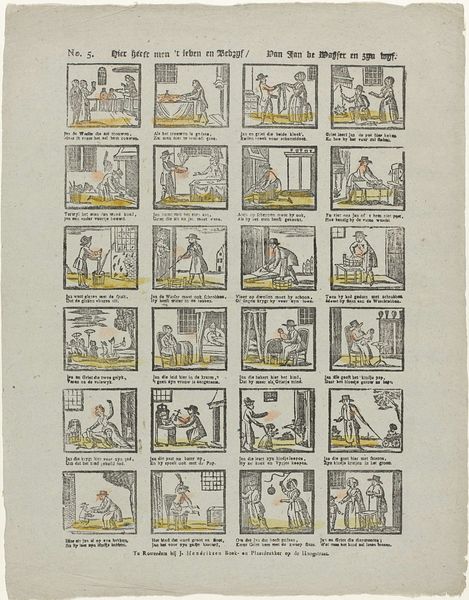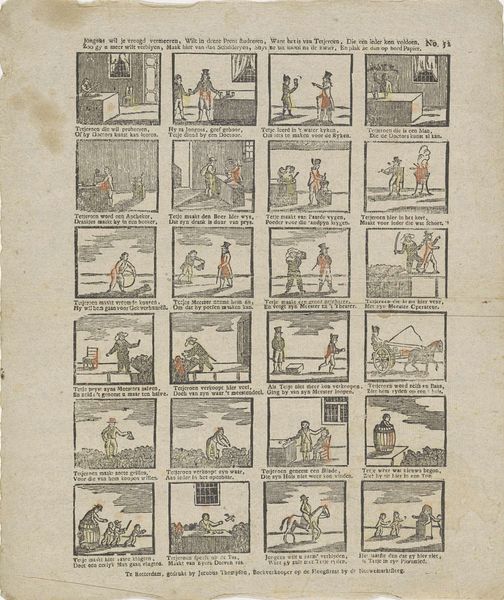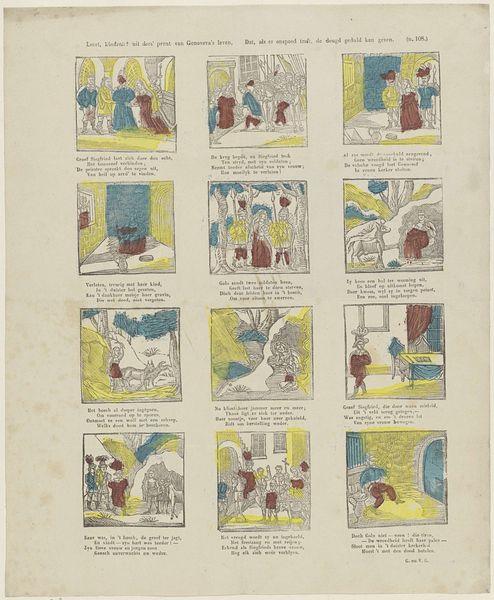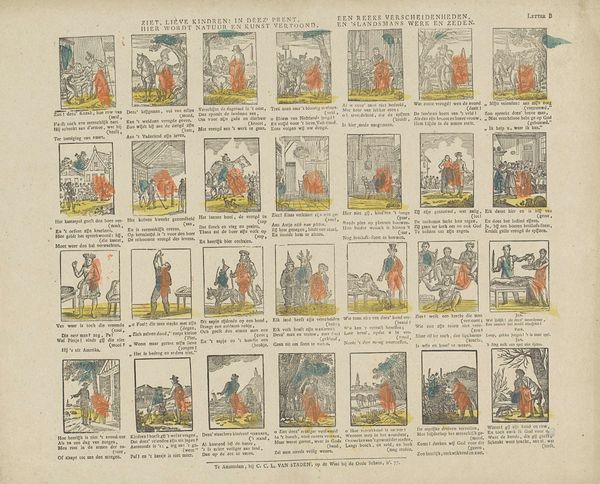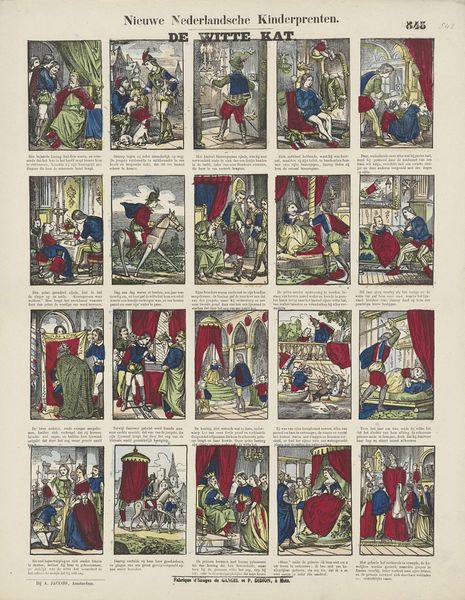
graphic-art, print
#
graphic-art
#
narrative-art
# print
#
genre-painting
Dimensions: height 416 mm, width 332 mm
Copyright: Rijks Museum: Open Domain
Curator: Look at this intriguing print. Entitled “Ziet hier ô kinderen afgebeeld het volgende, als:" which translates to something like, “See here oh children depicted as follows," by C.C.L. van Staden, dating somewhere between 1822 and 1870. What leaps out at you, Iconographer? Editor: It feels like a children's broadside, a page ripped from a book of cautionary tales or simple moral lessons. The color palette is quite limited, giving it an old-fashioned, almost antique air, though the imagery, I think, attempts a very playful tone with what appears to be childhood activities. Curator: You've nailed the mood perfectly. The work consists of twelve vignettes, each depicting a different scene with an accompanying text below. Think of them as mini-narratives about children. There is so much genre-painting concentrated here, little narratives captured in such small areas! Editor: Absolutely. Each scene functions like a separate emblem. For example, "Matrozen Aficheid" which appears to mean, "Sailors Departure", depicts figures leaving town, and seems like a story of abandonment or perhaps the adventure of becoming a sailor? Then we have ‘Kanonvietjes Afsteken’, something to do with little canons. I can already sense the visual themes like risk-taking or loss that the artist may want to address, even if playful and innocuous at first glance. Curator: Indeed! Each image is charged. "De Arme Savoyaard"—"The Poor Savoyard," perhaps depicts the image of emigration, with the boy in traditional costume standing by a rugged cliff; or “Tuinfiguren,” possibly shows kids causing mischief. You know I feel these aren’t purely innocent activities, there's commentary laced through them. Editor: The format is a visual feast – multiple images trigger the mind’s connections. Are these stories intended as warnings, teaching children good behavior, perhaps offering social commentary on childhood poverty and labor? Curator: I like how you're reading these individual stories, but also recognizing the connections between them. This form makes a very digestible story! Editor: It prompts a consideration of cultural memory, doesn't it? The symbolism would have been immediately apparent to the 19th-century viewer, grounding childhood activities and struggles to a larger cultural perspective on the community’s youth. A far cry from how a contemporary audience might decode them. Curator: I'm glad we got to peer into Van Staden's collection of miniatures. It is an eye-opening tableau. Editor: A rich landscape, indeed. There are enough cultural themes to keep anyone thinking!
Comments
No comments
Be the first to comment and join the conversation on the ultimate creative platform.
